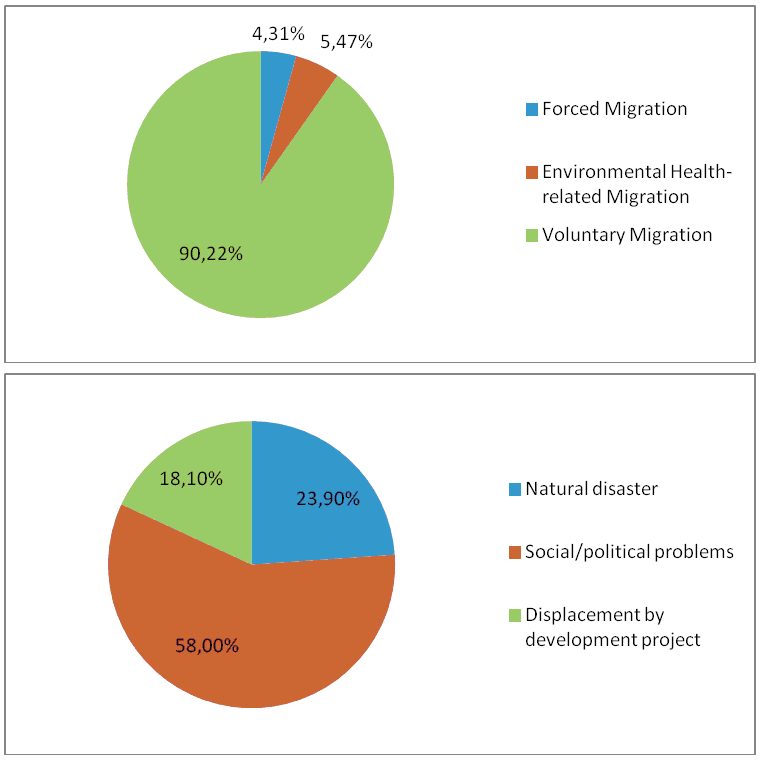1 Introduction
People migrate for different reasons, and in different directions. They may migrate from one continent to another continent or from one country to another country within the same continent (external migration), or from one state to another state within the same country or from one district to another district in the same state or from rural area to urban area within the same district (internal migration). Again, migration, whatever might be the direction, can be voluntary or involuntary (forced migration) according to the reasons. Driving force of migration is either the pull factor or the push factor or both. Generally, pull factors are the reasons for voluntary migration (Bell et al., 2010). Pull factors are commonly depicted as better job opportunity, improved life style, better civic amenities, environment friendly climate and many others.
1.1 Push factors for forced migration
Reasons for involuntary or forced migration are mainly push factors. Push factors are natural disasters, war, communal riot, evacuation for so-called development activities, etc. A forced migrant is often called an internally displaced person when he or she is forced to leave his or her home region because of unfavourable conditions (political, social, environmental, etc.) but does not cross any boundary.Forced migration (including internal displacement) is always a concern as it implies the existence of humanitarian crisis, having many complex manifestations (Zetter, 2012). The causes of forced migration are nothing new, although they vary in time, geographical location and different socioeconomic and political conditions. The major causes are natural or man-made disasters, social or political conflicts and development policies. The 64th Round of National Sample Survey conducted during July 2007 to June 2008 gave some information on the nature of human migration in India (NSS, 2012*). According to the survey results more than four percent of the total migrants are forced migrants (Figure 1*), and nearly twenty-four percent of the total forced migrations are due to natural disasters.
1.2 Purpose of the study
River bank erosion is one of the natural disasters that causes displacement of inhabitants who previously lived near river banks. Many of those erosion-distressed people loose not only their homes, means of livelihood and assets but also their previous identity, and they, therefore, often try hard for recognition of an identity (Das, 2010). Flood and river bank erosion are almost regular phenomena throughout the world. Between these two types of disaster, the loss due to flood is temporary, but the loss of land due to river bank erosion is permanent and has a long term impact on the economy. Once residential and productive land is lost due to river bank erosion, it can hardly be replaced. Generally, institutional compensation mechanisms are not available for erosion distressed people. This undesirable experience calls for appropriate policy, so that the conflict between river dynamics and human settlement could be minimized.The purpose of this study is to understand the gravity of the river bank erosion problem through a literature survey. There are numerous scholarly articles and research papers on river bank erosion. Major contributions of these articles address river morphology and impact of human intervention. Nevertheless, few studies have been devoted to impacts of erosion on the lives and livelihoods of affected people. This review article is a systematic study covering the river bank erosion problem in general with examples in different parts of the world, erosion caused by human intervention, and impact of erosion on human life. Major emphasis has been given to socio-economic impact of erosion with special reference to India. Some examples on impact of erosion in other countries have also been included in the discussion where they are available. This study reveals to some extent the state of the art of the literature on this very important topic, and the aspects of the problem where they could be developed for appropriate policy formulation in mitigating conflicts between river dynamics and economic development.





